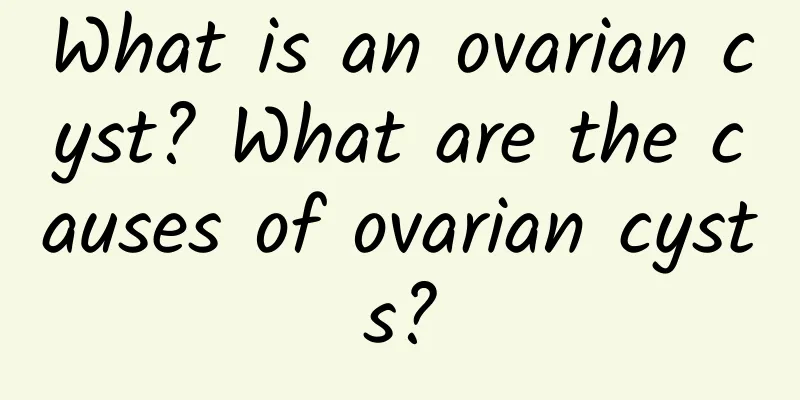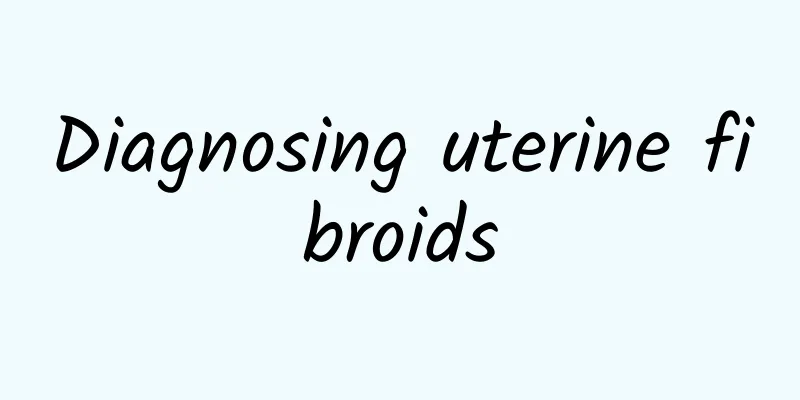What is an ovarian cyst? What are the causes of ovarian cysts?

|
What exactly is an ovarian cyst? What are the causes of ovarian cysts? The appearance of ovarian cysts may be related to endocrine disorders, insufficient secretion of luteinizing hormone, and damage to ovulation. This is just an inaccurate answer. Under normal circumstances, the ovaries are solid tissues. In women with ovulation cycles, a small amount of fluid will gather during the growth of the eggs every month, forming the so-called follicles. In theory, the follicles can reach their largest state during the ovulation period. Once B-ultrasound finds that there is too much fluid in the ovaries, we can call it an ovarian cyst. Generally speaking, ovarian cysts are divided into physiological and pathological types. It is generally recommended to go to the hospital for examination 3-7 days after the menstruation is over. It should be noted that ovarian cysts can cause rupture of ovarian cysts, endanger life, premature aging of women's faces, miscarriage, and difficult labor, which are all hazards caused by ovarian cysts. Causes of ovarian cysts include: 1. Abnormal development of oocytes The egg cell is a cell that contains only half of the human chromosomes, that is, 23 chromosomes. If it develops and proliferates abnormally, it will form ovarian cysts and cause certain damage to the body. 2. Endometriosis If endometriosis occurs in the ovaries, the lesions can invade the ovarian tissue and cause cysts, causing adverse effects on women's health. If not treated in time, it may even lead to infertility and other diseases. 3. The egg cell is not released If the follicle in the ovary does not rupture, the egg cell cannot be released normally. Under this abnormal circumstance, the follicle will grow larger and larger, forming an ovarian cyst. 4. Abnormal development of cells surrounding the egg Ovarian cysts may also form if various cells that are closely adjacent to the egg cells spontaneously develop and grow abnormally. If such diseases are not treated in time, they are likely to become cancerous. |
<<: What to do if there is pelvic fluid accumulation after egg retrieval
>>: How to completely treat ovarian cysts
Recommend
What factors cause menopause?
The purpose of analyzing the causes of menopause ...
What should I pay attention to when I have high blood pressure and uterine fibroids? What should I not eat when I have high blood pressure and uterine fibroids?
What should I pay attention to when I have high b...
When is the best time to have an abortion? What should you pay attention to after an abortion?
It is not uncommon for men and women in love to h...
What are the characteristics and symptoms of miscarriage?
The menstruation is late, the mood is depressed, ...
Ovarian cysts may be caused by environmental factors
Ovarian cysts may be caused by environmental fact...
Precautions and treatment after artificial abortion
What should you pay attention to and how to regul...
What should women pay attention to after having an abortion?
After a woman has an abortion, her body needs som...
Can abortion cure postpartum disease?
After a long pregnancy, the joy and happiness of ...
Why does cervical hypertrophy recur after being cured?
The treatment of cervical hypertrophy is already ...
What are the preventive measures for chronic adnexitis?
With the progress of the times, people's livi...
What are the main causes of adnexitis?
Among all kinds of gynecological inflammation, ad...
What to eat to treat endometrial polyps
Women with endometrial polyps must pay attention....
Dietary taboos for patients with vulvar leukoplakia
Many patients with vulvar leukoplakia choose some...
Can I get pregnant if I have uterine adnexitis?
Can you still get pregnant if you have adnexitis?...
The harm of multiple uterine fibroids How to treat multiple uterine fibroids
Multiple uterine fibroids grow very fast, or afte...









